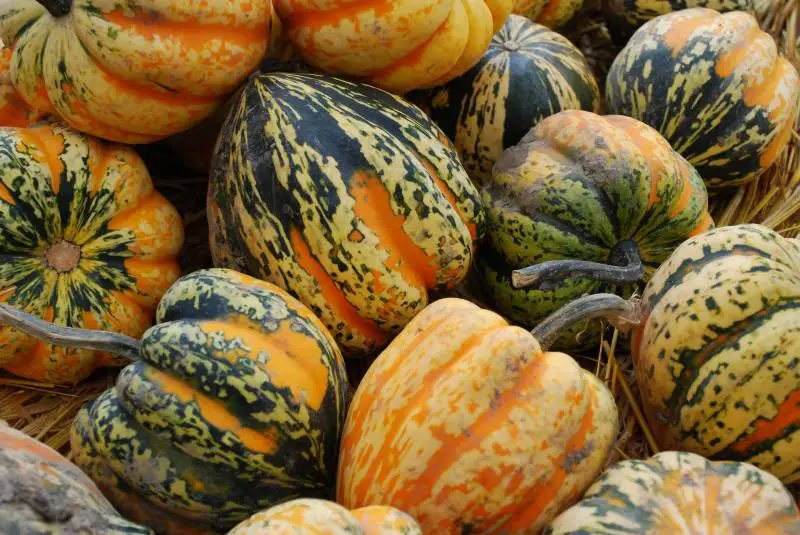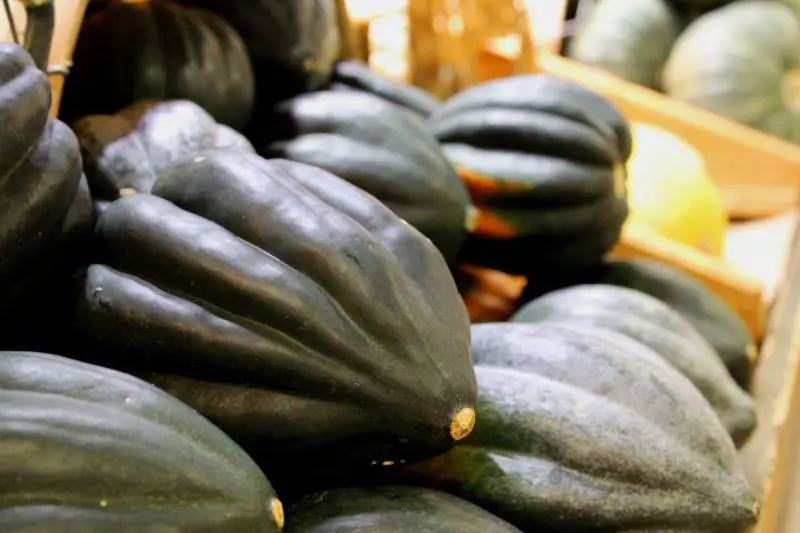How To Tell If Acorn Squash Is Bad [Guide]

Acorn squash is a winter squash with a sweet, nutty flavor. This vegetable can lay on the counter for days and not show any signs of decay. Hence it can be challenging to figure out if it has turned bad. Preservation is necessary to ensure it has not gone bad when used for cooking.
Acorn squash shelf life is one to two months if stored at room temperature. In contrast, it will last only two weeks if stored in a refrigerator.
They will suffer damage if stored in temperatures below 50 F. Similarly, hot air leads to moisture loss resulting in shorter shelf life. It is advised to use the vegetable within two weeks of its purchase.
Once the squash is cut, wrap the pieces using a cling film. Refrigerate the portions and make sure to use them within four days.
Few Ways To Determine If Acorn Squash Is Bad
The following are ways to tell if acorn squash is bad or not.
Slicing The Squash Can Give You The Answer
Once the squash has peaked its shelf life, one has to slice it into pieces. There will be slimy grey seeds that tell you that the squash has gone bad. If the flesh is very dull in color, then it also has spoiled. If the squash has a weird smell, then it is time to throw it away.
Check also the seeds if you don’t notice the above signs.
The fruit has likely gone bad, so you should probably just throw it away if you don’t notice any other signs of deterioration besides the grey or dull seeds. Lightly colored or golden acorn squash seeds have a tendency to turn gray when they are past their prime.
Soft Spots Inside
Acorn squash can sometimes turn orange, which is completely fine. But the presence of soft spots on the vegetable is a clue for the acorn rot. In this case, it has gone bad and can no longer be used. Cut away any soft spots and use the remaining squash; avoid storing squash with soft spots, holes, or fresh/unhealed gouges.
The Touch Of The Vegetable
Generally, a store acorn squash tends to get soft as the shelf life increases. Fresh squash skin should be firm, dull, and uniformly beige in color. If the vegetable is not firm, it means it’s no longer good for cooking.
A Keen Look At The Stem
The stem will give you useful tips. Closer attention to the stem of the vegetable will let you know if it is old. The stem of bad acorn squash will be limp.
The Shell Has To Be Checked
Acorn squash ripens to a dark green hue. The area that has come into contact with the ground will turn orange. It’s most likely overripe and will be dry, stringy, and bland when cooked when its color is almost orange. As long as it doesn’t exhibit any signs of rotting, orange acorn squash is technically still edible even though it may not taste the best.
Acorn squash will develop a hard rind or skin in addition to changing color. The harder the shell of the squash, the better it is for consumption.
When you press on the shell, it should be tough, and there should be no pressure. If you press on the squash and you do not feel the hardness, it has gone bad. It is time for the fruit to be thrown away.
Keep Track Of The Time
It is advised to ask the seller about the time it was picked up. Acorn squash usually takes 80-100 days to ripen. Asking the question will give you the answer in terms of the freshness of the vegetable. Anything more than 100 days means the squash is no longer fit to be used.
The Storage
Acorn squash that is whole and uncut should be kept for one to two months in a cool, dry location. Choosing the right storage conditions plays a crucial role in vegetable spoilage. Acorn squash is usually devoid of becoming rotten when kept in a dark and cool space.
The acorn squash is generally one of the vegetables that you can store for a long time. The storing conditions can indicate if the vegetable is at the rim of getting rotten. You can keep the acorn squash in the fridge for up to 4 days after you cut or cook it as long as you seal it properly.
This vegetable may lose quality and quickly deteriorate due to the moisture in the refrigerator.
Tapping The Vegetable
Ripe usable squash will sound hollow once you tap on it. If the vegetable is not hollow, it has gone bad and can no longer be used. Another easy way to determine the usage is by placing it in water.
Once it is placed in water, it should float; if it doesn’t float, it must be disposed of. This is one of the simple ways to determine if the acorn squash has gone bad.

Check The Surface
The surface of the acorn squash should not be shiny. It should be dull and matte and should have hard, thick skin. If the surface is shiny, there may be cuts, cracks, and spots on the skin. This is an indication that the vegetable has gone bad, and bacteria have begun to break down the squash.
If you can cut the skin so easily, it means it’s time that you throw the vegetable. The Acorn squash is at its peak when it has a deep green color. The vegetable can also have a tinge of orange. A little orange or yellow is acceptable. If your squash has too much orange or yellow, it is overripe.
The Texture
The easiest way to find out if the squash has gone bad is to touch the vegetable. You can tell your vegetables are starting to rot by looking for mushy spots and bruises all over the skin. It should not be mushy, start leaking liquids, or feel empty.
If the squash is mushy, you should immediately toss it out.